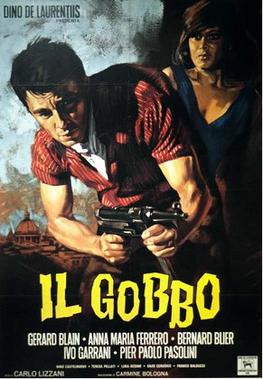
Giuseppe Ungaretti was an Italian modernist poet, journalist, essayist, critic, academic, and recipient of the inaugural 1970 Neustadt International Prize for Literature. A leading representative of the experimental trend known as Ermetismo ("Hermeticism"), he was one of the most prominent contributors to 20th century Italian literature. Influenced by symbolism, he was briefly aligned with futurism. Like many futurists, he took an irredentist position during World War I. Ungaretti debuted as a poet while fighting in the trenches, publishing one of his best-known pieces, L'allegria.

Procida is one of the Phlegraean Islands off the coast of Naples in southern Italy. The island is between Cape Miseno and the island of Ischia. With its tiny satellite island of Vivara, it is a comune (municipality) of the Metropolitan City of Naples, in the region of Campania.

Elsa Morante was an Italian novelist, poet, translator and children's books author. Her novel La storia (History) is included in the Bokklubben World Library List of 100 Best Books of All Time.

Alberto Pincherle, known by his pseudonym Alberto Moravia, was an Italian novelist and journalist. His novels explored matters of modern sexuality, social alienation and existentialism. Moravia is best known for his debut novel Gli indifferenti and for the anti-fascist novel Il conformista, the basis for the film The Conformist (1970) directed by Bernardo Bertolucci. Other novels of his adapted for the cinema are Agostino, filmed with the same title by Mauro Bolognini in 1962; Il disprezzo, filmed by Jean-Luc Godard as Le Mépris ; La noia (Boredom), filmed with that title by Damiano Damiani in 1963 and released in the US as The Empty Canvas in 1964 and La ciociara, filmed by Vittorio De Sica as Two Women (1960). Cédric Kahn's L'Ennui (1998) is another version of La noia.

The Strega Prize is the most important Italian literary award. It has been awarded annually since 1947 for the best work of prose fiction written in the Italian language by an author of any nationality and first published between 1 March of the previous year and 28/29 February.

Dario Bellezza was an Italian poet, author and playwright. He won the Viareggio, Gatto, and Montale prizes.

The Apprenticeship of Duddy Kravitz is a novel by Canadian author Mordecai Richler. It was published in 1959 by André Deutsch, and adapted to the screen in 1974.

Laura Morante is an Italian film actress.

Une page d'amour is the eighth novel in the 'Rougon-Macquart' series by Émile Zola, set among the petite bourgeoisie in Second Empire suburban Paris. It was first serialised between December 11, 1877, and April 4, 1878, in Le Bien public, before being published in novel form by Charpentier in April 1878.
In Italian literature, some folkloric words like Ciociaria and ciociari are used to denote people, film settings, and characters in Italian neorealist works.
Giorgio van Straten is an Italian writer and manager of arts organizations. His first novel Generazione was published in 1987. In 2000 he won four literary prizes for Il mio nome a memoria, published in English as My Name, A Living Memory (2003), the story of his Jewish-Dutch family from 1811 to our days. That same year he was awarded the Grand Official Order of Merit of the Italian Republic.
Lily Tuck is an American novelist and short story writer whose novel The News from Paraguay won the 2004 National Book Award for Fiction. Her 2008 biography Woman of Rome: A Life of Elsa Morante won the Premio Elsa Morante. Her novel Siam was nominated for the 2000 PEN/Faulkner Award for Fiction. She is a Guggenheim Fellow.
Michele Mari is an Italian novelist, short story writer, academic critic and poet. The son of a Milanese industrial designer and artist, Enzo Mari, Mari teaches Italian literature at the Università Statale di Milano; he is considered one of the leading experts of 18th century Italian literature.
Cesare Garboli was an Italian literary and theatre critic, translator, writer and academic.

The Hunchback of Rome is a 1960 Italian crime-drama film directed by Carlo Lizzani. It is loosely based on the real life events of Giuseppe Albano, an Italian partisan that was involved in the Roman Resistance against German occupation between 1943 and 1945.

L'isola di Arturo is a 1962 Italian drama film directed by Damiano Damiani. It is based on the novel with the same name written by Elsa Morante. The film won the Golden Shell at the San Sebastiá

La Storia ("History") is a 1986 Italian drama film directed by Luigi Comencini and starring Claudia Cardinale. It is based on the 1974 novel of the same name written by Elsa Morante. A shorter version of the film was released theatrically, while a 4 hours and a half version was broadcast in three parts on Rai 2 in December 1986. It premiered out of competition at the 43rd Venice International Film Festival, where Cardinale refused to appear, upset because the film had not been selected in the main competition.

House of Liars or Lies and Sorcery is a novel by the Italian writer Elsa Morante published in 1948, set in Southern Italy at the turn of the 20th century, describing a family's escape from increasingly dire financial and social circumstances into wishful thinking and delusions. The narrative covers three generations of a family in decline, blending elements of the fairy tale as well as the social novel and the coming-of-age-story. In the year of its publication the novel received the Premio Viareggio.

La Storia (transl. History) is a 2024 Italian historical drama television miniseries based on the 1974 novel of the same name by Elsa Morante. It aired on Rai 1 from 8 January to 23 January 2024.
Vincenzo Nemolato is an Italian actor. He is best known for his roles as Pirro in Alice Rohrwacher's 2023 film, La chimera, and as Riccardo Schicchi in the 2024 Netflix miniseries Supersex.














